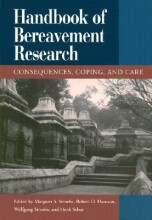Assessing Program Impact: Randomized Field Experiments
12 important questions on Assessing Program Impact: Randomized Field Experiments
There are 2 competing pressures when designing impact evaluations
- practical considerations: time, money, cooperation, and protection of human subjects
The strongest design for an impact evaluation is
Causal relationships are expressed in _____
When stated that A causes B, this usually means that if we introduce A, B is more likely to result than if we do not introduce A. This does not imply that B always results from A, nor that B occurs only if A happens first.
- Higher grades + faster learning
- Never study anything twice
- 100% sure, 100% understanding
When is Impact assessment appropriate?
- pilot demo
- when implemented at limited scale
- ongoing programs
Prereqs:
- build on earlier forms of evaluation (assessment of program theory and program process) - Program circumstances
- sufficiently implemented so that implementation problems are ironed out (available resources)
- political dimensions (need for info)
Impact assessment are inherently ____
compare treatment vs. control (no treatment or alternative treatment)
Randomized field experiment
participants are randomly sorted into groups (intervention or control) then compared on outcome measures to determine the effects of the intervention
Several reasons why it is difficult to implement very best impact evaluation design
2) time and resource constraints
3) justification of importance of the results being tested and intended use of results
The ____ the number of units randomly assigned to intervention and control groups the more likely those groups are to be statistically significant
RCTs are only a small proportion of impact assessment. There are a few reasons:
ethical considerations
time consuming
costly
demanding with regard to expertise and cooperation of participants and service providers
challenging to conduct (implement)
Dennis and Boruch identified 5 threshold conditions that should be met before a RCT
Efficacy of the proposed intervention must be uncertain under field conditions
There should be no simpler alternatives for evaluating the intervention
Results must be potentially important for policy
Design must be able to meet ethical standards of both the researchers and the service providers
2 strategies to improve estimate of effects that result from RCT
2) collect data periodically during the course of an intervention (allow evaluators to construct useful accounts of how intervention work over time)
Analyzing randomized experiments
2) regression (better statistical control of the variables other than intervention that might affect outcomes)
The question on the page originate from the summary of the following study material:
- A unique study and practice tool
- Never study anything twice again
- Get the grades you hope for
- 100% sure, 100% understanding
































